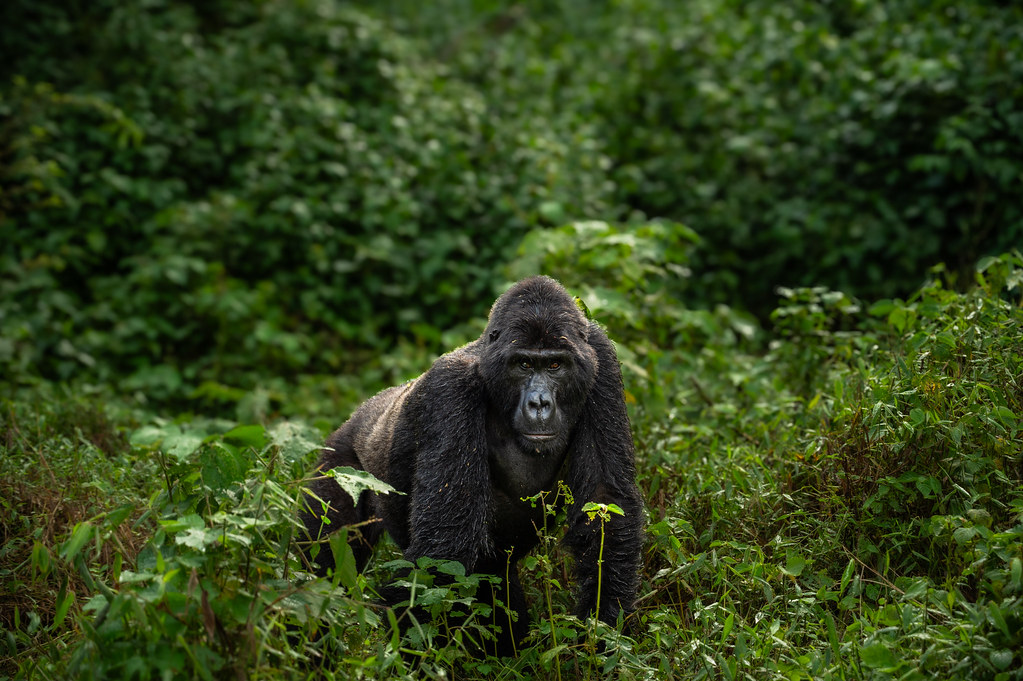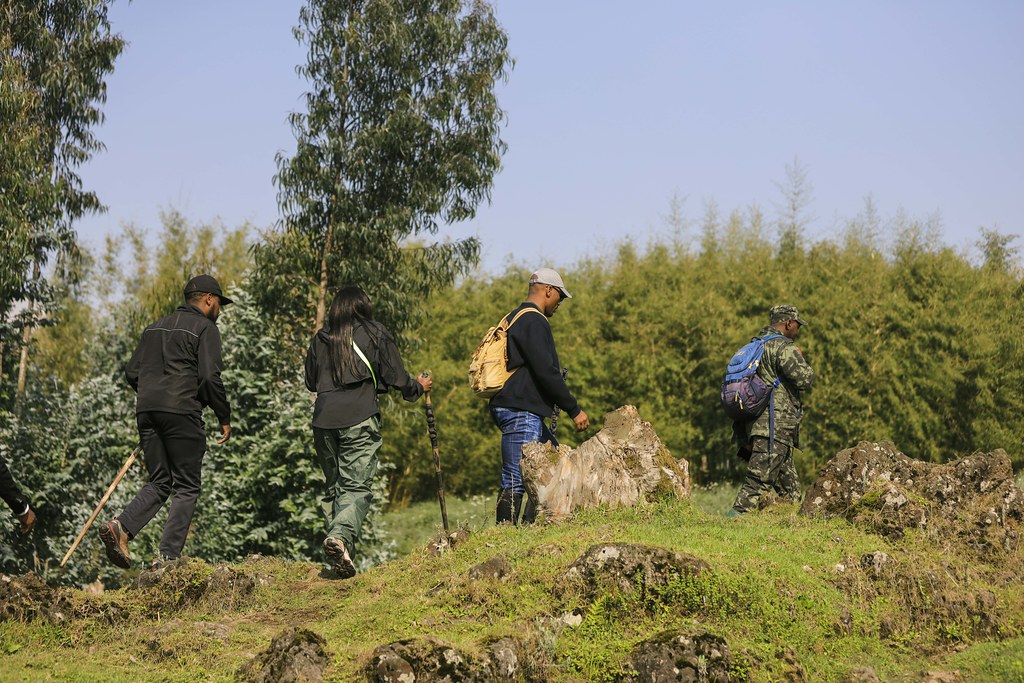The Daily Diet of Mountain Gorillas – An Exciting Exploration
The daily diet of mountain gorillas food list — Why are mountain gorillas endangered — Mountain gorilla habitat — Mountain gorilla eating — How do mountain gorillas get their food — Mountain gorilla food chain — Mountain gorillas appearance — Do mountain gorillas eat meat
Mountain gorillas are a rare species of great apes that roam the lush landscapes of Virunga National Park in the Democratic Republic of Congo, Volcanoes National Park in Rwanda, and Mgahinga and Bwindi National Park in Uganda.
Mountain gorillas belong to the Eastern gorilla subspecies. Gorillas come in four fascinating subspecies: mountain gorillas, eastern lowland gorillas, western lowland gorillas, and cross river gorillas.
These various subspecies exhibit subtle variations in body shape and the environments they inhabit.

Diet of Mountain Gorillas
What is the Diet of Mountain Gorillas? A Closer Look at Their Diet
Mountain gorillas are primarily herbivores, and their diet is a vivid reflection of the dense, green world they inhabit. From the misty highlands of Uganda, Rwanda, and the Democratic Republic of Congo, these magnificent primates feast on an impressive variety of vegetation, adapting with ease to what the forest offers throughout the seasons.
Their meals are predominantly composed of stems, leaves, bamboo shoots, pith, and fruits. They consume the tender shoots of over 250 plant species, often selecting their food based on its sugar, fiber, and protein content. Remarkably, they are not picky eaters; they consume what is available and nutritious, showing a preference for foods that are rich in sugar and low in tannins and indigestible fiber.
Though plants make up the vast majority of their diet, mountain gorillas sometimes turn to small invertebrates to supplement their nutrition. Termites, ants, and grubs offer occasional boosts of protein. In fact, gorillas have been observed breaking into termite nests to access the larvae hidden within, demonstrating both strength and a surprising level of dexterity.
Fruits make up about 25% of their intake, and when fruit is plentiful, mountain gorillas will travel greater distances—sometimes up to 6 square kilometers a day to forage. This movement ensures they access the most nutrient-rich parts of their habitat while also playing a key role in seed dispersal within the forest ecosystem.
Gorillas are also known to consume ash and soil. This behavior, often called geophagy, helps regulate their digestive systems by neutralizing toxins and balancing out their high-fiber diet.
The quantity of food a mountain gorilla consumes daily is substantial. An adult male, with his larger frame and muscle mass, can consume up to 30 kilograms of vegetation in a single day. In contrast, an adult female typically eats around 18 kilograms. Their large, powerful jaws and a full set of 32 teeth similar to those of humans are perfectly suited for chewing fibrous, moisture-rich foliage.
Interestingly, despite their size and strength, mountain gorillas rarely drink water directly. Their diet is naturally hydrating, as the vegetation they consume contains sufficient moisture to meet their needs.
The diet of a mountain gorilla is not just about survival it’s a deep interaction with their ecosystem. Every bite reflects the delicate balance between their biology, behavior, and the biodiverse world they help sustain.
Explore some of our gorilla trekking safaris in Uganda and Rwanda to encounter these majestic creatures in their natural habitat.
- 1 Day Rwanda Gorilla Tour
- 2 Days Uganda Gorilla Tour
- 5 Days Rwanda Gorilla Safari
- 4 Days Luxury Uganda Gorilla Trekking Safari
- 6 Days Luxury Gorilla Trekking Rwanda
A memorable experience that enables you to appreciate the unadulterated beauty of nature is witnessing a group of gorillas as they interact and graze in peace. We encourage you to book your gorilla safari with us right now if you’re prepared to see this remarkable behavior up close. Allow us to lead you into the heart of the wilderness, where you will see mountain gorillas in their own environment, leading peaceful, strong lives amidst East Africa’s foggy woods.
Feeding Habits of Mountain Gorillas
Mountain gorillas follow a fascinating daily rhythm when it comes to feeding. Their day typically begins with early morning foraging, followed by mid-day resting and then more feeding in the late afternoon. These gentle giants spend more than half of their day grazing chewing methodically on leaves, stems, and shoots as they move slowly through their forest home. The feeding is often a calm, communal activity, where family members sit together, carefully selecting and stripping foliage from plants.
What’s remarkable is their selective yet seasonal eating patterns. During wetter months, gorillas prefer tender leaves and stems, while in drier periods, they turn to bark and tougher vegetation. When fruit is abundant, they’ll travel longer distances to indulge in this favored treat, despite it making up a smaller part of their overall diet. Their adaptability ensures they always find sustenance, even in challenging conditions.


